Results 1 to 9 of 9
-
01-20-2015, 12:16 AM #1
 The threads that fellow rock hounds live for - hone identity required.
The threads that fellow rock hounds live for - hone identity required.
Dear gents
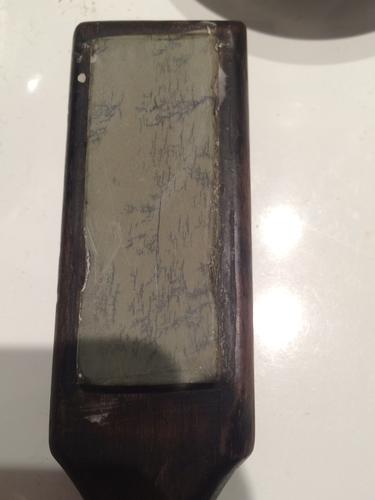
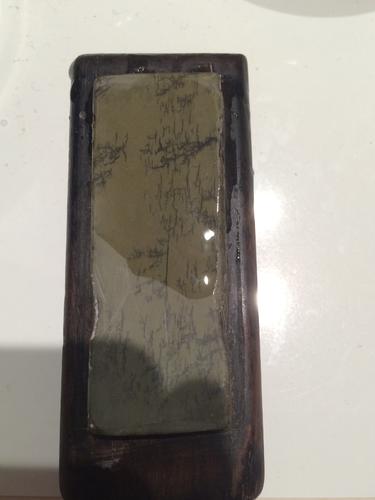
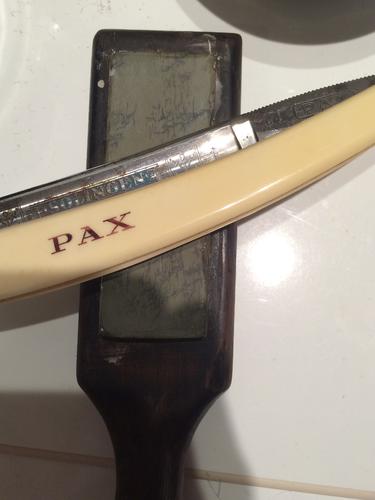
I acquired this small hone mounted in a paddle. There is considerable weight relative to its size at the end with the hone so I believe there is an even amount of hone within the wood if I were to 'free it', for want of a better term.
Two questions spring to mind post lapping:
1) Is it a coticule? It is a soft hone and the slurry is initially off-white like a coti, but quickly becomes off-white crossed with the colour of the hone. The slurry on other coticules does not tend change from off-white to the colour of the hone this unless you lap them for quite a while.
2) Why is it so small? (On my screen the first photo is more or less to scale). Some one clearly liked the hone enough to spend time making a paddle for it and thereafter mounting it. It is very fine to touch. I haven't tested it sufficiently, but it appears to be polisher, not a cutter. It is under 3 inches long and I provided a photo with a basic razor as a scale.
Your thoughts as always are greatly appreciated and I look forward to reading what you gentlemen have to say.Last edited by Scipio; 01-20-2015 at 12:22 AM.
-
01-20-2015, 12:26 AM #2Senior Member

- Join Date
- Mar 2009
- Posts
- 1,211
Thanked: 202
Saw one similar to this in past as Thuri. Perhaps Hatzicho will chime in.
-
The Following User Says Thank You to adrspach For This Useful Post:
Scipio (01-20-2015)
-
01-20-2015, 01:57 AM #3

Could be related to the french paddle hones.
I've become quite interested in these old paddle stones.
-
01-20-2015, 06:26 AM #4

It may be a thuringian, I can't really tell from the picture.
Why is it small and on a paddle? All wood working texts show these small paddle hones on carving benches and the text mentions sharpening carving chisels on them. The carving chisels are 1/4" wide down to 1/16" wide - so it is a good sized hone for the purpose. The paddle part is to lock it in place to the work bench using a hold fast (friction clamp). They were definitely finishers and usually used with oil.Some people never go crazy. What truly horrible lives they must lead - Charles Bukowski
-
01-20-2015, 08:44 AM #5

Well that's very hard to say from the pictures. Two hones come into my mind that I know that have this kind of brown inclusions (mostly fossil plants) and your description of hardness and slurry may fit. Thuringian hones and green LaVerte coticules. Here is a picture of some examples.
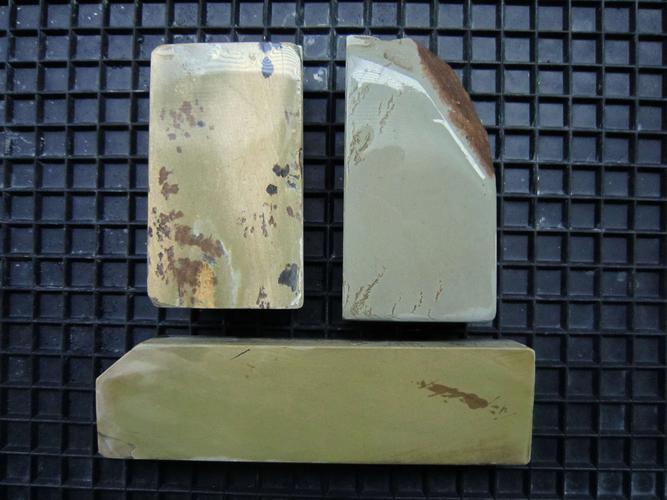
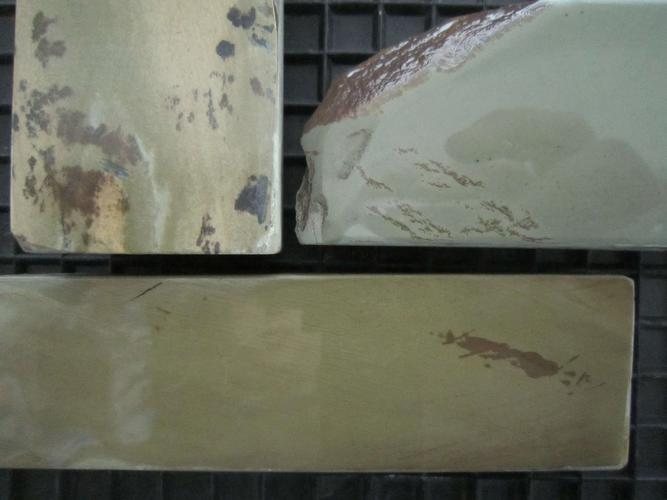
Thuri above on the rigth, the other two LaVerte cotis.
However the color of the hone on your fotos seem not Thuri-like and also for coticules it is very dark green. Was the hone used with oil before? Than the thuri option will drop out but that would explain darker color on a coticule.
How fast is the hone? Does it remove metal quickly?
Could of course also be something entirely else. The french hones currently discussed on another thread could be an option too.
I don't think that the hone was used for razor honing. Smaller hones were often used for penknifes, medical instruments, etc.
-
The Following 2 Users Say Thank You to hatzicho For This Useful Post:
randydance062449 (03-19-2015), Scipio (01-20-2015)
-
01-20-2015, 09:14 AM #6

Hatzicho
Thanks for the information and pictures. The fossil markings are most like your green Thuringian example. If it were Thuringian that would explain its fine texture. The colour of the hone is most like some examples of yellow Thuringian I have seen in the past. I ran an old razor over it with slurry and it does not appear to be a cutter so most likely a fine polisher.
Shame it wasn't meant for razors!
-
01-20-2015, 09:20 AM #7
-
03-15-2015, 06:12 PM #8Member

- Join Date
- Aug 2014
- Location
- iceland
- Posts
- 92
Thanked: 38
Little bit different pattern, but..it also can be
http://straightrazorpalace.com/hones...ml#post1440686
Sometimes they are filled up with oil and much darker then without oil in them.
Mine was brown, nowdays it's much closer to examples from link above.
Nice stone in any case. Congrats
-
03-15-2015, 08:17 PM #9

Actually the markings in the stone look like dendrites which are usually Manganese. Hard to tell without seeing it in person and with a little magnification.
No matter how many men you kill you can't kill your successor-Emperor Nero


 7Likes
7Likes LinkBack URL
LinkBack URL About LinkBacks
About LinkBacks







 Reply With Quote
Reply With Quote

